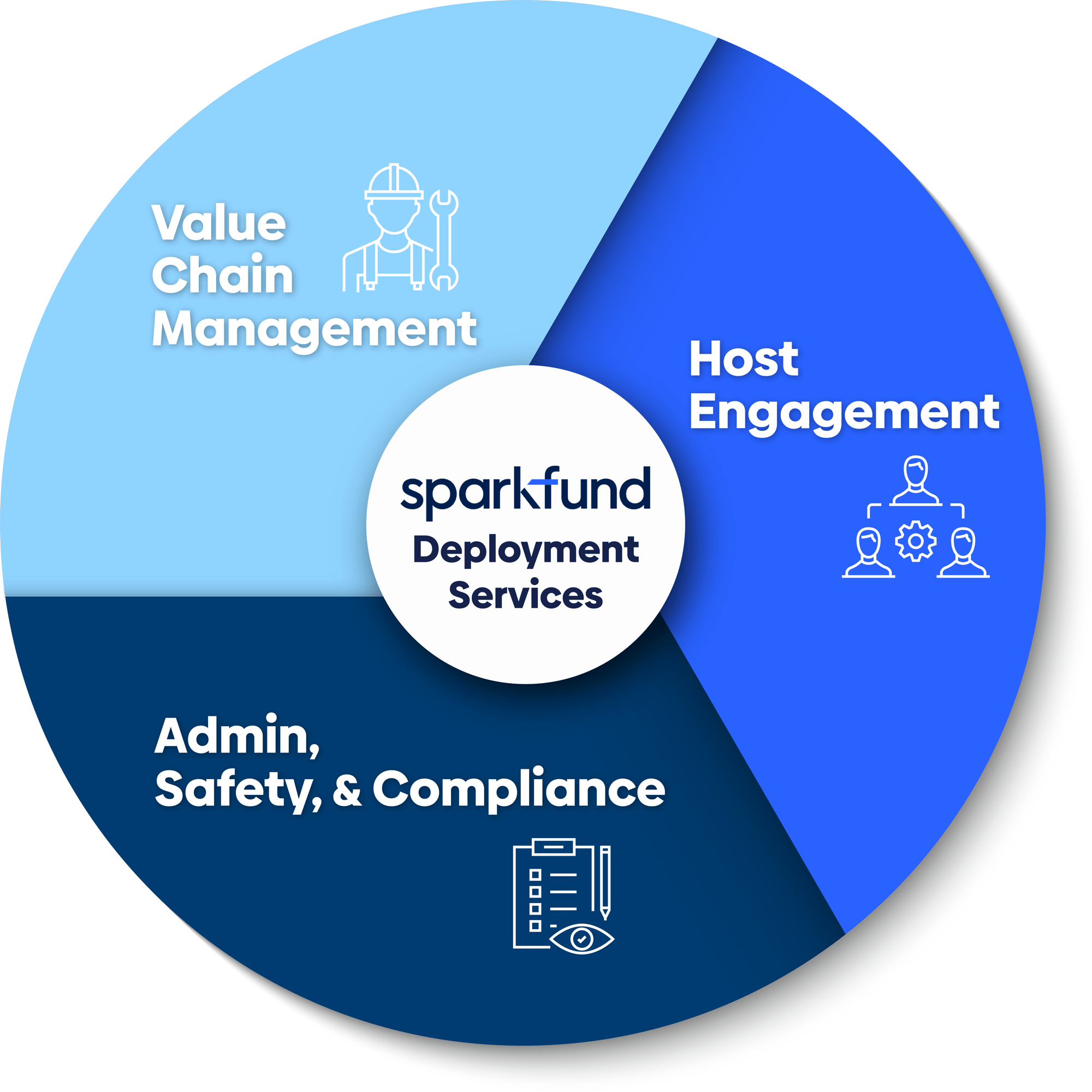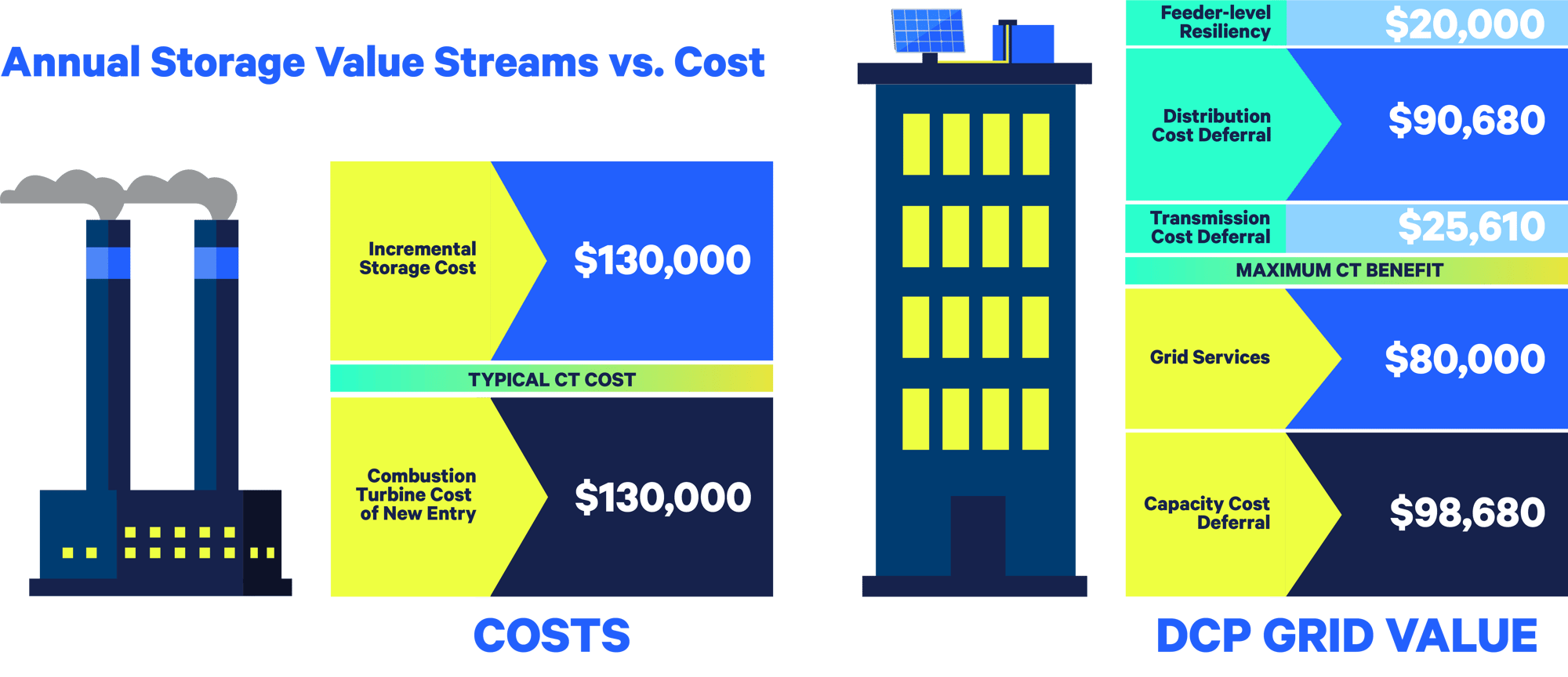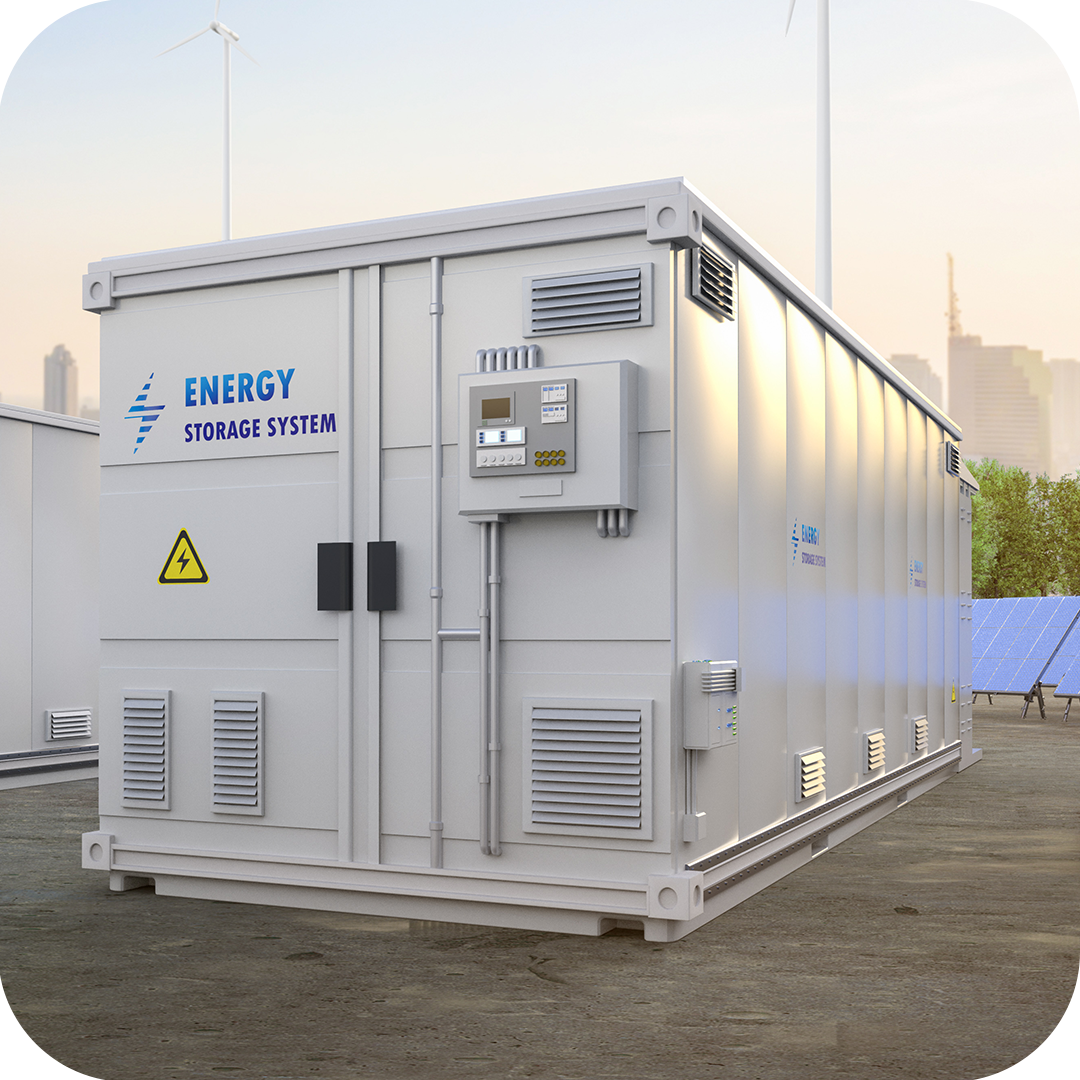Delivering Grid Value at Scale
Distributed Capacity Procurement
With new load growth on the horizon, utilities face the dual challenge of maintaining affordability and building fast enough to support economic growth. To meet this unprecedented demand and unlock the full value of the grid, utilities are employing DCP to plan, deploy, and dispatch distributed energy resources (DERs) to create a more efficient, energy-dense, and cost-effective grid.
We partner with utilities, energy majors, hyperscalers, and building owners to achieve critical outcomes in:
- Grid Growth Acceleration
- Peak Management
- Resiliency, Reliability, and Grid Hardening
Discover how Sparkfund's flagship solution unlocks the full value of the grid at the scale and pace necessary to meet demand today.


A New Tool for Utilities and Data Centers
Sparkfund's DCP model empowers utilities and data centers to answer the rapidly evolving and variable deployment rate of the energy market with scale, speed, and flexibility.
By overcoming one of the main challenges with DERs to date — operational unpredictability and random siting — the DCP model integrates DERs into utility system planning processes, ultimately allowing utilities to meet infrastructure needs across grid growth, efficiency, and hardening.
Utility-led deployment of DERs, delivers flexible system-level capacity — transforming our energy landscape.
Sparkfund has the experience and capabilities to help make it happen.
Distributed Capacity Procurement
Utility-led DER deployment delivers capacity at the scale and pace necessary to unlock the full value of the grid.
-
Affordability: Lowers system costs through grid value maximization and a competitive local supply chain.
-
Reliability: Enhances resilience, provides backup power, and improves community preparedness.
-
Clean Energy: Accelerates solar, storage, and efficiency adoption, reducing emissions and bills.
-
Stronger Communities: Prioritizes delivery of local energy infrastructure to build stronger communities.
-
Economic Development: Attracts investments, creates jobs, and stimulates innovation in the territory.
-
Faster Time to Power: Leverages modular DERs for rapid response to grid needs and electrification efforts.
How it Works
At Sparkfund, we understand the complexities of modern energy needs. That's why we've developed a robust three-layer framework to ensure success:

Plan
Our planning phase leverages in-house expertise and partners with leading grid analytics firms to answer crucial questions:- Where will distributed generation and storage be most beneficial?
- How will each energy resource impact the grid now and in the future?
- Where do these solutions make the most economic sense?

Deploy
Once optimal locations and resource types are identified, our Deployment Services team springs into action by:
- Organizing competitive, local vendor workforces.
- Engaging customer site hosts.
- Managing procurement, design, installation, and maintenance of distributed resources.

Dispatch
Once the assets are installed, our team coordinates with stakeholders to seamlessly integrate with DERMS and the full technology stack for dispatch, including:
- Coordinating with providers to integrate communication with assets.
- Coordinating the integration of existing IT and OT tools like SCADA/ADMS with centralized DERMs to dispatch distributed capacity in areas that need it most.
- Partnering with preferred providers across the technology stack or assisting in DERMs selection.
Deployment Services
Our goal is to help utilities accelerate the deployment of distributed assets, delivering flexible system-level capacity that reduces costs to all ratepayers by smoothing peak demand and avoiding or deferring the need for CTs/peakers, as well as reducing costly transmission and distribution system upgrades as demand grows rapidly.
Sparkfund simplifies the delivery of grid value at scale with key support functions that include:
- Host engagement
- Value chain management
- Admin, safety, and compliance

“My sense is, for the electric utility industry, this [DCP] is becoming a priority because of just how important of a tool this is to solving some of their challenges in the near term, right? And for the solar industry, this could become a priority because of virtual power plants and the like.”
DERs at Scale: Grid Value Stack
The DCP Model efficiently meets grid demand where it is
- Places energy storage and solar where needed, helping balance power use and reduce actual kWh demand and excess generation.
- Reduces waste through energy storage during off-peak hours and avoiding long-distance power losses.
- Serves both downstream and upstream grid needs.

Accelerate the VPP Model


Cohesive Customer Experience
Targeted Grid Value
Compared to a traditional VPP, the DCP approach leverages utility led planning to strategically deploy assets in places that avoid the most cost and creates the most value for the grid. An optimized value chain then maximizes the efficiency of existing distribution infrastructure by ensuring quality install and maintenance, cybersecurity, and alignment with community goals.

The Math Behind the Impact
What if utilities deployed DERs quickly and at scale?
Annual Breakdown
If each utility deployed 1MW of accredited capacity on 500 buildings, that would result in 500MW of new capacity.
The Long-Term Potential
If 50 utilities repeated this every year, we’d achieve an annualized deployment rate 25 GW.
That’s ~2% of today’s entire U.S. grid capacity deployed in 12 months!
The Future Grid:
Immediate Impact: While we wait for large-scale transmission infrastructure and centralized plants to come online, DERs can fill critical capacity gaps now.
Cost-Effective Growth: Strategically placed DERs help avoid expensive and lengthy infrastructure upgrades.
A Balanced Grid: Combining utility-led DER deployment with centralized solutions builds a smarter, more adaptive grid.